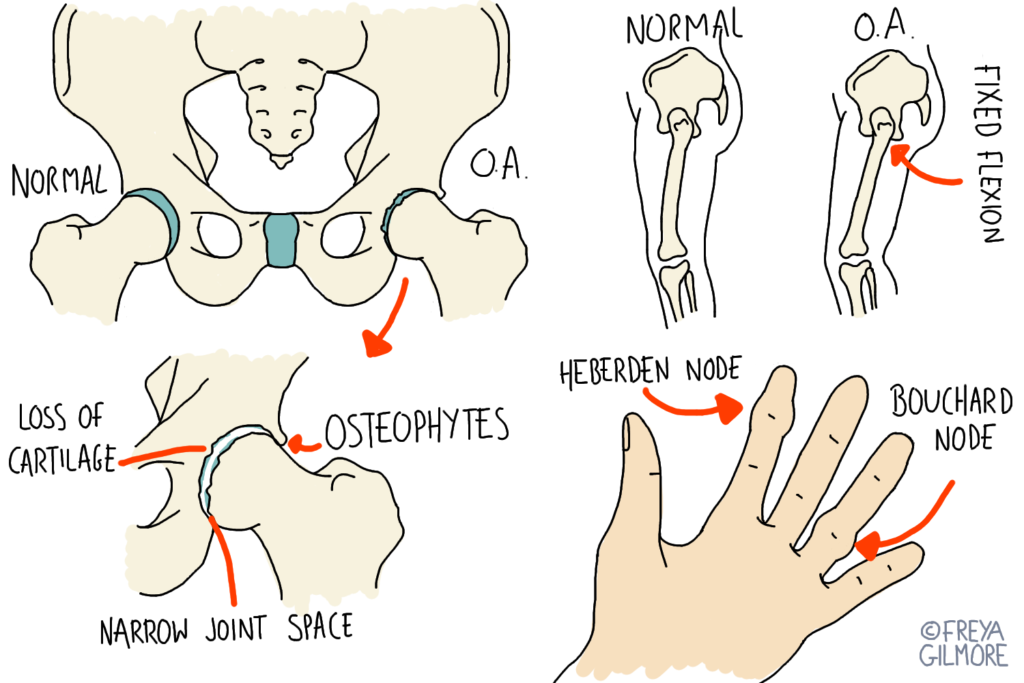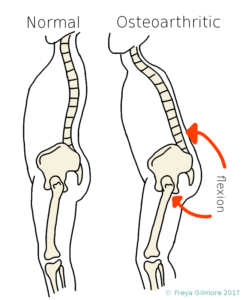The diagnosis “osteoarthritis” often feels like the end of the road for patients who receive it. In fact, it is a condition of living tissue that can still respond to treatment, exercise, and other lifestyle changes.

What is Osteoarthritis?
Osteoarthritis, also known as “OA” or simply “arthritis”, is a condition of cartilage. It used to be synonymous with “wear and tear”, but we understand now that there are many more factors involved than just the demand on the joints. Genetic, physiological, and dietary factors are now recognised as significant. The idea of “wear and tear” is also somewhat misleading, as lack of movement also speeds up disease development.

OA often affects the knee and hip. Hip arthritis can go undetected for some time, as the body is particularly good at compensating for it. Extension (taking your leg backwards) is one of the first movements limited by hip OA, but by leaning forward slightly, you can limit pain without noticing much change. However, avoiding extension does the cartilage no favours. Cartilage has a poor blood supply, and relies on the fluid within the joint to bring in nutrients and remove waste. Like a sponge, squashing and releasing the cartilage helps to flush out waste and make space for nutrients. But if that portion of the joint’s cartilage is not moved, it begins to stagnate, and the arthritis progresses.
The image to the right illustrates the postural changes associated with this adaption. The leaning forwards needs to be compensated for, causing the knees to bend (exacerbating any arthritis that might be there too) and the neck to extend (potentially increasing the incidence of headaches). This becomes recognisable as a geriatric posture that may have been preventable- or may still be reversible.
Disease Progression
Early stage osteoarthritis affects little within the joint apart from the cartilage itself. But beyond the joint, the muscles that act over it will be compensating to try and help. Unfortunately, by tensing up and limiting movement, they tend to make the condition worse. Cartilage needs movement to bring in nutrients and remove waste.
As the disease progresses, deeper layers within the joint are affected. This leads to patches where the cartilage has died right back, uncovering bone. The bone itself can develop painful ulcers just below the surface, and protruding spurs at the edge of the joint which further limit movement. At this point, there is little we can do to help the joint itself, but we can continue to encourage optimum function from the surrounding muscles.
Osteopathy for Osteoarthritis
Early stage OA is typically quite responsive to treatment. Movement for the joint within treatment sessions helps to remind the body that these movements are safe and comfortable- beginning the flushing-out process while also making everyday movement easier. Beverley will also provide exercises where appropriate to target the movements that need to be utilised. Lifestyle changes, including less obvious things like your desk or car ergonomics can be addressed too. Some people may also respond well to heat or ice, but this will be discussed in your appointment.
